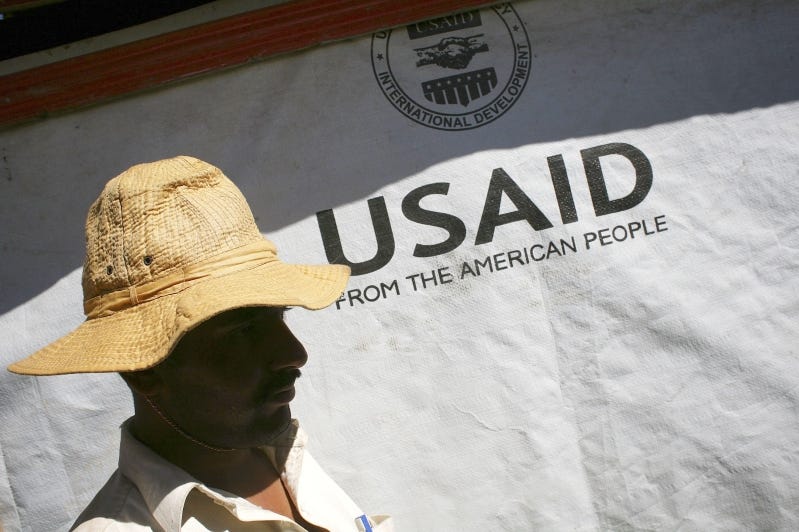Seventy Years of Covert Control Disguised as Aid
Soft Power Imperialism Masquerading as Development
For over seventy years, the United States Agency for International Development (USAID) operated in Pakistan under a manufactured image. It claimed to offer “aid.” In reality, it delivered manipulation. This was never charity—it was coercion. Surveillance, subversion, and systemic interference were packaged as development while Pakistan’s sovereignty was auctioned off one dollar at a time.
Let’s be clear: this wasn’t assistance. It was soft power imperialism. From the Cold War to the War on Terror and beyond, USAID didn’t uplift Pakistan—it undermined it. Billions were poured in, not to strengthen the nation, but to shackle it. Schools were built, yes—but so were narratives. Roads were laid, along with ideological pipelines. The mission wasn’t to empower the people—it was to influence them. They enabled dictators and disabled democracy.
Aid for Authoritarians, Scraps for Democracy
USAID’s record in Pakistan is a masterclass in duplicity. It funneled support to military regimes—Ayub, Zia, Musharraf—while they muzzled the press, crushed dissent, and bartered away national autonomy. Civilian governments were either starved of funds or drowned in conditionalities. That wasn’t mismanagement—it was design. Aid peaked when democracy was strangled, and dried up when the people tried to breathe.
Even the much-hyped Kerry-Lugar-Berman Act was a leash disguised as lifeline. Touted as civilian support, it was in fact a bribe. Conditional money aimed not at partnership, but submission—an attempt to micromanage Pakistan’s internal civil-military balance from afar.
NGOs: Imported Agents, Local Puppets
Pakistan didn’t need 100,000 NGOs. It needed sovereignty. But USAID had no interest in that. It injected billions into a synthetic “civil society” crafted to reflect American priorities, not Pakistani realities. These weren’t partners—they were proxies.
Organizations like PILDAT, FAFEN, and countless others became echo chambers for Washington. Masked as neutral, they functioned as soft surveillance nodes—amplifying donor agendas, not indigenous needs. Their allegiance was not to the people of Pakistan, but to the funding pipelines running from D.C.
Education and Media: Indoctrination by Design
Education was weaponized. USAID didn’t just build schools—it curated mindsets. Textbooks were rewritten to align with American narratives. Scholarships siphoned the country’s brightest minds away from national service into donor loyalty. Even children’s programming like Sesame Street was co-opted—repurposed as a soft-power tool before collapsing in scandal.
The media wasn’t spared either. Hundreds of journalists were trained by USAID-backed programs. Outlets were funded and editorial lines shaped. What emerged wasn’t a free press—it was a donor-class of reporters trained in American jargon, fluent in Western values, but silent on national erosion. They didn’t expose power. They served it.
Health as a Front for Espionage
USAID crossed every red line when it used healthcare as a cover for intelligence operations. The CIA’s fake vaccination drive—under the umbrella of humanitarian work—sabotaged real health initiatives. It led to the assassination of polio workers and reversed years of public health progress. USAID said nothing. It didn’t just breach trust—it incinerated it. Lives were lost. Faith in medicine was shattered.
Corruption, Theft, and Blood Money
USAID was never a victim of corruption—it was a co-conspirator. Millions evaporated into shell NGOs and ghost projects. The Sesame Street embezzlement scandal was just a symptom. More egregiously, USAID funds reached groups like Helping Hand for Relief and Development—flagged for terror ties. This didn’t happen despite USAID. It happened because oversight was a charade.
Pakistan’s political elite, bureaucrats, and contractors gorged themselves on foreign money. They became fluent in donor-speak, skilled in the art of begging—while infrastructure crumbled and the public suffered. Foreign funds became the mother’s milk of political irrelevance and institutional decay.
In March 2025, it finally ended. The Trump administration halted USAID’s operations. $845 million worth of projects died overnight. Clinics shuttered. Schools halted. NGOs scrambled. Thousands were laid off.
But Pakistanis didn’t mourn. They understood. USAID wasn’t a lifeline—it was a leash. The collapse of the NGO-industrial complex was not a tragedy. It was an overdue correction. For the first time in decades, Pakistan had to confront its own broken systems without hiding behind borrowed crutches.
USAID never intended to build Pakistan. It intended to brand it. It didn’t strengthen democracy—it subverted it. It didn’t serve the people—it served strategic interests. It didn’t promote progress—it manufactured dependency.
It was a Trojan Horse—its gift was poison.
Now, with the façade gone, the choice is stark: reclaim autonomy or await the next master disguised as a donor. The money has stopped. The mask has slipped. What remains is a nation with scars, choices—and a brief window to detox from decades of external manipulation.
Let it be known: free money is never free.
And no sovereign state was ever built on borrowed agendas.



